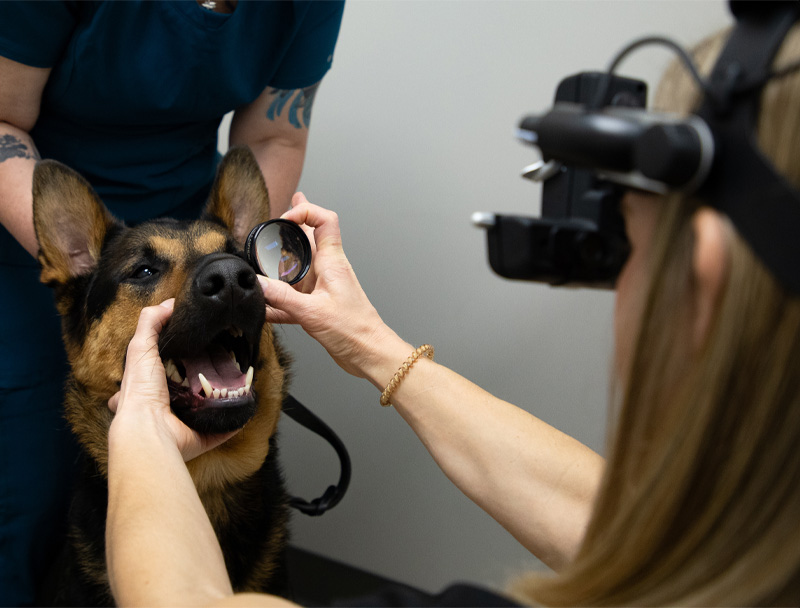
Pet Corneal Surgery in Greenville, SC
Carolina Animal Eye provides expert pet corneal surgery to address serious corneal diseases and injuries using advanced techniques and compassionate care.
Advanced Surgical Treatment for Corneal Conditions in Pets
The cornea — the clear outer layer of the eye — is essential for healthy vision. When it becomes damaged, infected, or structurally compromised, it can cause intense discomfort and lead to scarring or permanent blindness without timely intervention.
Our veterinary ophthalmologists specialize in the surgical treatment of complex corneal conditions, including:
- Corneal trauma from scratches, foreign bodies, or lacerations
- Corneal thinning (descemetoceles) at risk of rupture
- Corneal sequestrum (a common condition in cats causing dark, necrotic corneal tissue)
- Deep or perforated corneal ulcers
- Severe corneal infections
Most pets experience significant relief and vision preservation with early diagnosis and appropriate surgical intervention.
How Pet Corneal Surgery Works
At Carolina Animal Eye, we tailor every surgical plan to your pet’s specific diagnosis, comfort, and long-term prognosis. Our surgical procedures may include:
- Conjunctival Grafts: A thin section of conjunctival tissue is used to cover and support the healing of deep corneal ulcers or perforations, providing structure and blood supply to the damaged area.
- Corneoconjunctival Transposition (CCT): This technique moves a healthy piece of your pet’s own cornea to cover the diseased or ulcerated section, preserving clarity and function.
- Lamellar or Superficial Keratectomy: Damaged or infected corneal layers are surgically removed to allow healthy tissue to regenerate. This procedure is commonly used in cases of corneal sequestrum or chronic scarring.
- Temporary Tarsorrhaphy: The eyelids are partially sewn together to protect the healing eye after surgery or trauma, reducing exposure and aiding recovery.
- Corneal Gluing or Contact Lens Placement: For select cases or post-operative support, we may apply tissue adhesive or a bandage contact lens to protect the cornea and reduce discomfort. These procedures are performed using a surgical microscope, a specialized tool that allows for the precision required in ophthalmic care.

Every procedure is performed under general anesthesia with meticulous attention to safety, sterility, and pain control. Most surgeries are outpatient, and we provide detailed aftercare instructions and follow-up monitoring to support a smooth recovery.
Why Pet Corneal Surgery Is Important
Corneal injuries and diseases are not only painful — they can also advance quickly and cause permanent damage if left untreated. In many cases, medical management alone isn’t enough to heal severe ulcers or infections.
Surgical intervention is often the most effective way to:
- Relieve eye pain and discomfort
- Prevent corneal rupture or vision loss
- Remove infected or dead tissue
- Restore structural integrity to the eye
- Improve long-term visual outcomes
Timely surgery protects your pet’s comfort, vision, and overall quality of life.
Don’t wait to seek care if your pet has a non-healing eye ulcer, a dark corneal spot, or a recent eye injury. Early intervention with corneal surgery can save vision, reduce pain, and prevent serious complications.
